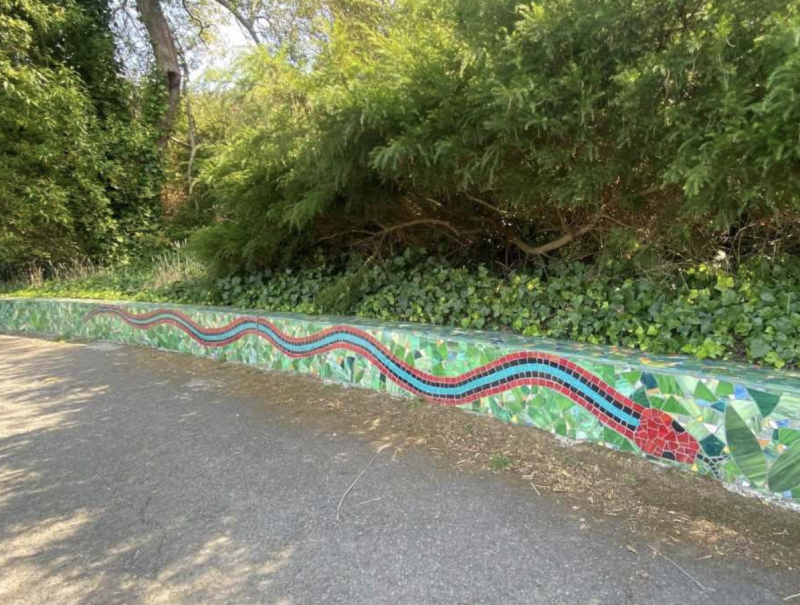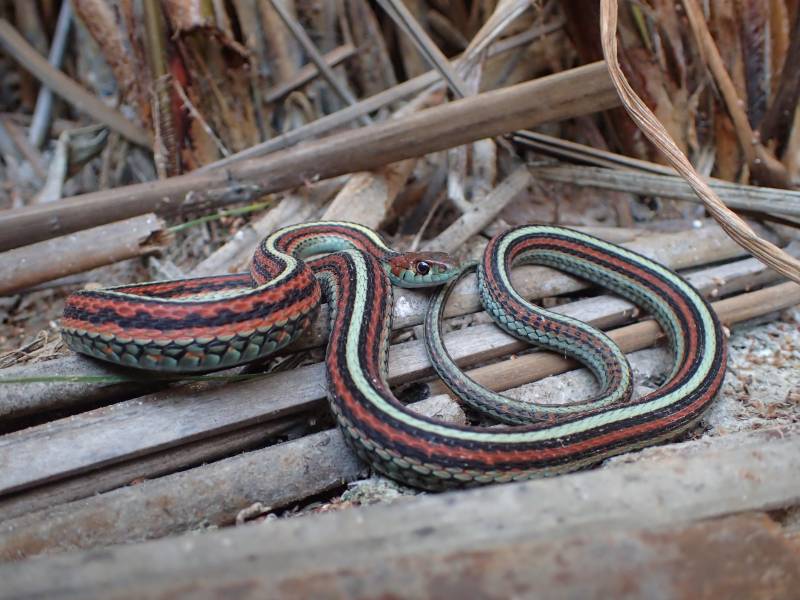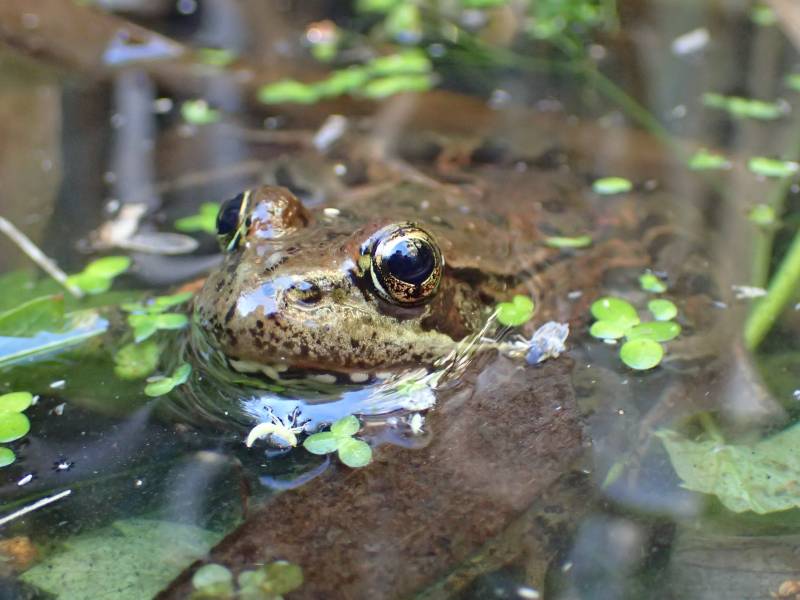Danger noodles. Nope ropes. Slither strings. Whatever you call them, however you feel about them, a few minutes listening to Natalie Reeder talk about snakes might change your perception of them forever.
“Snakes are the ultimate underdogs,” the wildlife biologist says. “They live on the ground, they have no arms and no legs, and a lot of people hate them. But here in Northern California, it’s very rare for somebody to be bit, even by a rattlesnake. Rattlesnakes are very not aggressive. When you touch them, they’re sort of squishy. They’re a little fat and lazy.”
When not talking smack about the waistlines of rattlesnakes, Reeder is in charge of keeping a close eye on the thousands of garter, gopher, yellow-bellied racer and ringneck snakes that live on a plot of land near the San Francisco International Airport. The 180-acre habitat is owned by the airport and dedicated specifically to providing snek frens with somewhere safe to hang out. (Reeder is purposely vague about its exact location, lest a bunch of annoying humans show up.) The snake recovery action plan was the brainchild of SFO, the U.S. Fish and Wildlife Service, the California Department of Fish and Wildlife, the Army Corps of Engineers, the Water Board, and a variety of airport consultants. Reeder herself acted as a consultant on the project for “four or five years” before moving into her full-time position with SFO six years ago.
The preservation project has been working well too. At last count, there were 1,300 San Francisco garter snakes (thamnophis sirtalis tetrataenia, if you’re nasty) living on the property—not bad for an endangered species.

San Francisco garter snakes—easy to identify because of their turquoise and red coloring—are endangered for a variety of reasons. Reeder explains that habitat loss and drought are the primary causes, poaching has historically been a problem, and that domestic cats pose an additional threat on top of wild predators like foxes and raccoons. The snakes’ situation is not helped by the smallness and specificity of region they live in. “They only live on the San Francisco peninsula, a little bit in the far north of Santa Cruz County, and in San Mateo County,” Reeder says. “It’s hard for people to find places to live in San Mateo County!”



